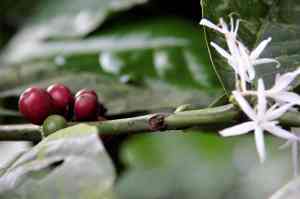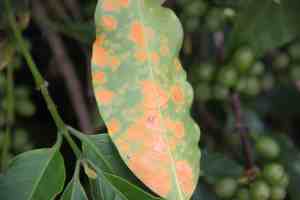There is not a single morning that I do not start with a cup of coffee. Without caffeine, my brain and body refuse to function. To ensure a thorough supply with coffee throughout the day, I have one espresso machine at home, another at work and a filter coffee machine for guests. I am sharing my passion (and dependency) for coffee with the coffee rust fungus Hemileia vastatrix – an iconic pathogen that made the British drink tea instead of coffee.
(Very) Brief history of coffee culture and trade
Let’s go back in time.
In the early days, coffee was mainly used as medicine and food additive by North African tribes. Around the early 1500s, the Turkish and Arabians had got the hang of it and enjoyed their coffee in socially amiable coffeehouses. By the early 17th century, Europeans got hooked on coffee. Coffeehouses had sprung up in all major cities of Europe and had become popular places to meet, enjoy coffee and discuss philosophy, religion, and politics.
Some smart Dutch businessmen saw their opportunity and began to invest in and trade coffee. They grew coffee in their colonies beginning in Ceylon in 1658. In 1796, control of Ceylon was handed over to the British and British colonials began to clear the Ceylon rain forest to establish coffee plantations. By the 1870s, Ceylon’s plantations were exporting nearly 100 million pounds of coffee a year, most of it to England. For a few decades, Ceylon was the world’s top coffee producer.
The coffee rust fungus – a perfect parasite
In 1869, the coffee rust fungus Hemileia vastatrix (named for the unusual shape of its spores: smooth on one side, roughened on the other) entered the stage in Ceylon. Coffee rust infections occur on the coffee leaves. The first symptoms are small, pale yellow spots on the upper leaf surface. As these spots grow, masses of orange uredospores (~400.000 per spot) appear on the leave undersurface. The spores germinate on the humid leaf surface and the fungus enters the plant tissue through natural openings. Inside the leaf, the rust fungus forms an intimate connection with the coffee plant by growing a feeding structure – called haustorium – within the living plant cell. Via the haustorium, the rust fungus absorbs its food from the coffee plant – without killing its host. When all the nutrients are sucked out, the infected leaves prematurely fall off and eventually the tree dies, often before it can produce coffee berries. The fallen leaves are still full of fungal spores.Rust fungi produce spores in huge amounts. One orange spot contains more than 400.000 uredospores. This means that a single, heavily infected coffee plant can produce millions of infectious spores, which are blown by the wind to other coffee plants.
Coffee rust turned Ceylon into a country of tea growers
After Hemileia’s arrival on Ceylon, annual coffee harvests in Ceylon plummeted. Many coffee growers were ruined. Former coffee plantations were left to rot. A few far-sighted growers recognized that the plantations could be turned over to tea-growing. One of them was the Scotsman Thomas Lipton, who purchased five ex-coffee plantations in 1890 to grow tea, which he sold in his grocery chains. He was the first to sell tea in boxed small quantities to make it available for everyone. Ever since the raging of coffee rust, Ceylon is known as the exporter of the world’s finest teas.
Tea that the British like to enjoy in the morning, afternoon and evening. Instead of a delicious cup of coffee! 1
1 Some people claim that it was not coffee rust, but the bad quality of the Ceylon coffee that turned the English into tea drinker.
Sources: http://www.apsnet.org/edcenter/intropp/lessons/fungi/Basidiomycetes/Pages/CoffeeRust.aspx; The Triumph of the Fungi. A rotten history. Nicholas P. Money. Oxford University Press. 2007.




Super-interesting! So is the current coffee production still threatened by H.vastatrix? or are the infections relying on specific climatic conditions? once again – great job Sarah!
LikeLike
Thanks Magda! Yes, the coffee production is still threatened by coffee rust. Latin America currently faces the worst coffee rust outbreak in its history. It has caused $1 billion of economic damage since 2012 and led to mass job losses.
LikeLike
Is there also a fungi that damaged the English wine plantations ? Would explain the lack of wine in England then….I wonder…
Joke apart, super interesting! Thanks Sarah
LikeLike